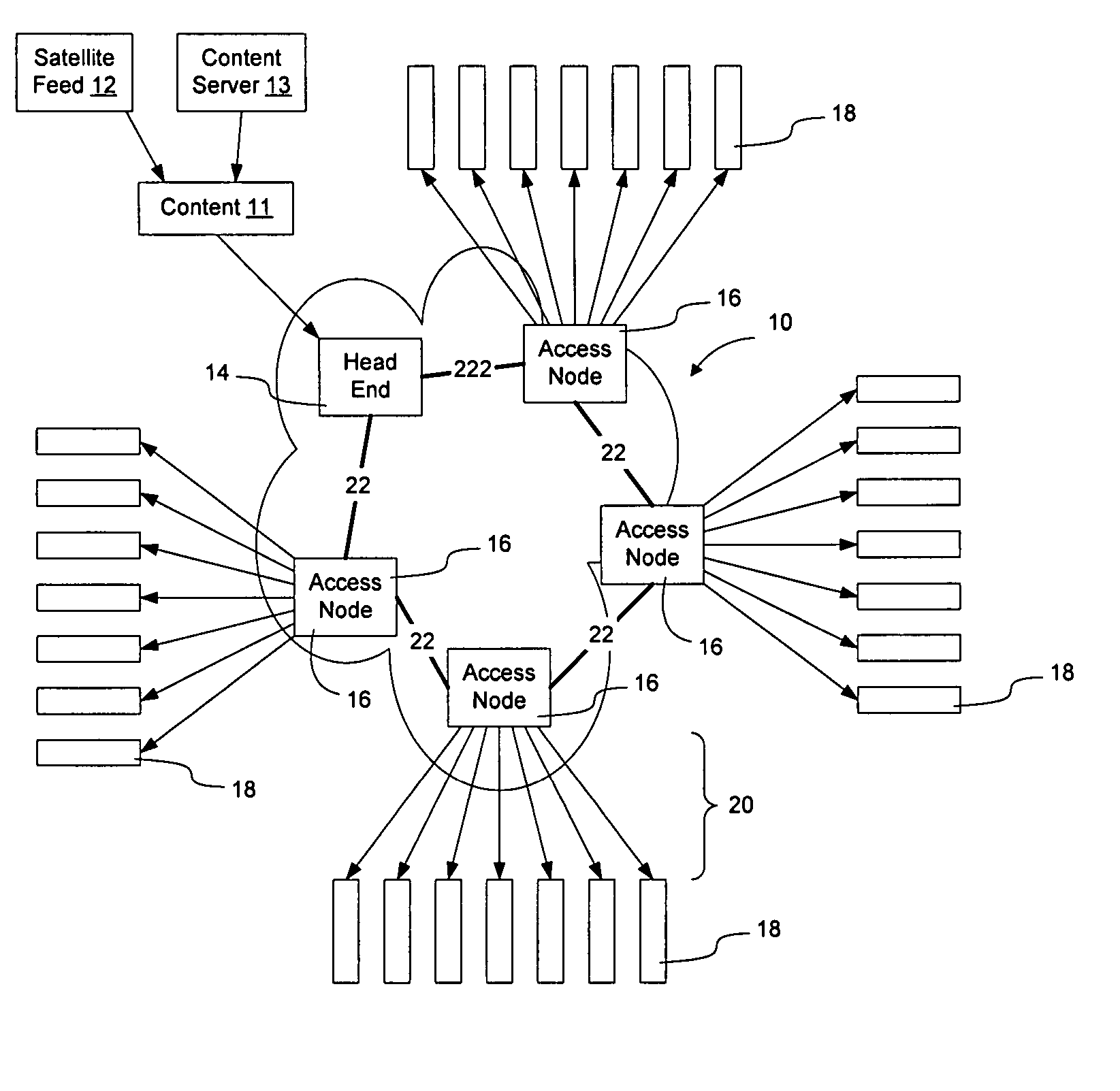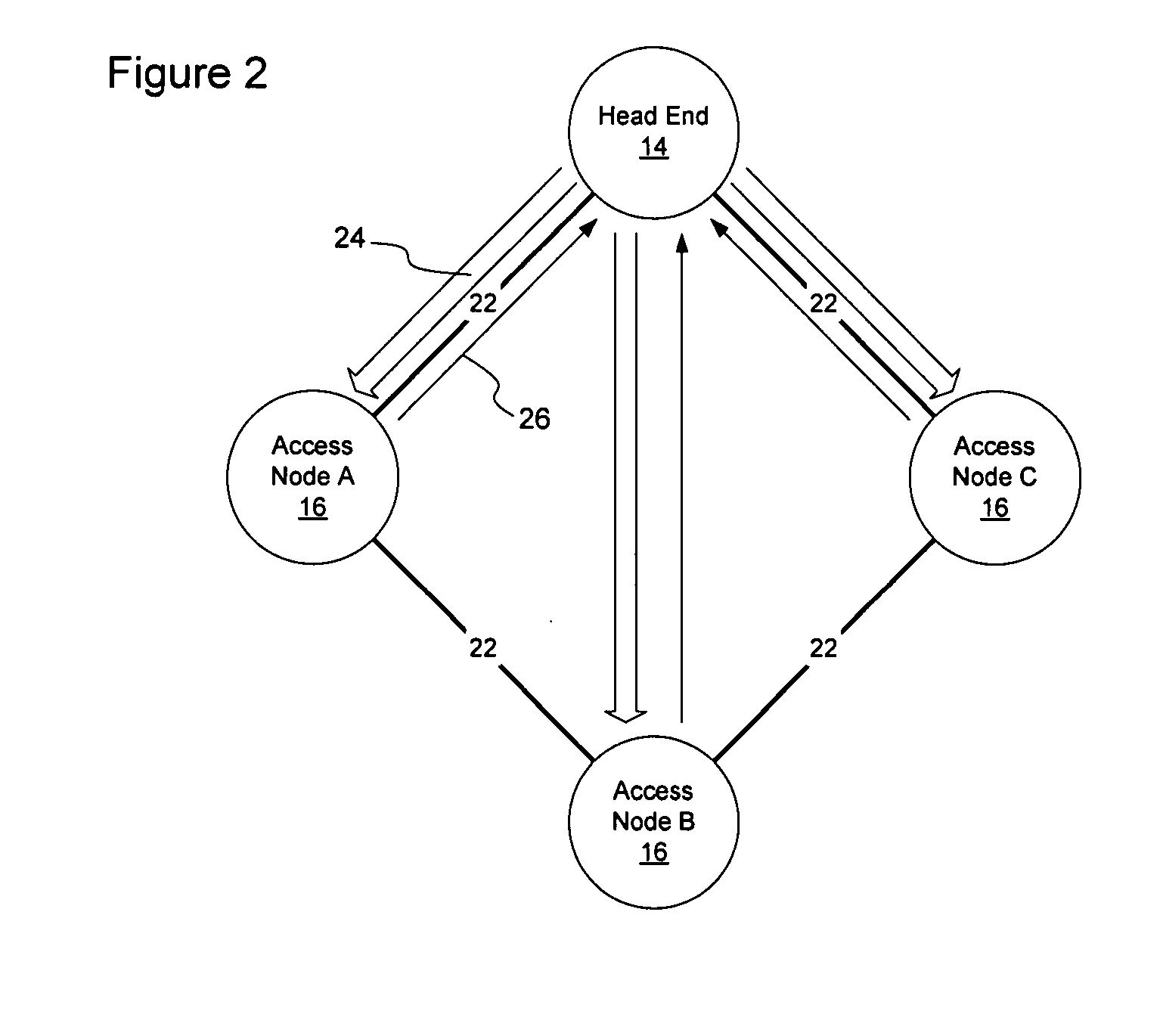Method and apparatus for providing integrated symmetric and asymmetric network capacity on an optical network
a technology of optical network and network capacity, applied in the field of communication networks, can solve the problems of changing traffic patterns, subscribers now generally consuming more bandwidth than they are generating, and there has not been a clear plan for how existing ring-topology networks may be adapted, so as to selectively increase the capacity of the network
- Summary
- Abstract
- Description
- Claims
- Application Information
AI Technical Summary
Benefits of technology
Problems solved by technology
Method used
Image
Examples
Embodiment Construction
[0031] The following detailed description sets forth numerous specific details to provide a thorough understanding of the invention. However, those skilled in the art will appreciate that the invention may be practiced without these specific details. In other instances, well-known methods, procedures, components, protocols, algorithms, and circuits have not been described in detail so as not to obscure the invention.
[0032]FIG. 1 illustrates an example of a network 10 in which content 11, such as video on demand content available via a satellite feed 12 or from a content server 13, is transported from a head-end node 14 to access nodes 16 and then out to subscribers 18. A distribution network 20 from the access nodes 16 to the subscribers 18 may be formed using optical fibers, copper wires, wireless links, or any other desired physical medium. The invention is not limited to a particular technology used to implement the links on the access network 20 interconnecting the subscribers ...
PUM
 Login to View More
Login to View More Abstract
Description
Claims
Application Information
 Login to View More
Login to View More - R&D
- Intellectual Property
- Life Sciences
- Materials
- Tech Scout
- Unparalleled Data Quality
- Higher Quality Content
- 60% Fewer Hallucinations
Browse by: Latest US Patents, China's latest patents, Technical Efficacy Thesaurus, Application Domain, Technology Topic, Popular Technical Reports.
© 2025 PatSnap. All rights reserved.Legal|Privacy policy|Modern Slavery Act Transparency Statement|Sitemap|About US| Contact US: help@patsnap.com



